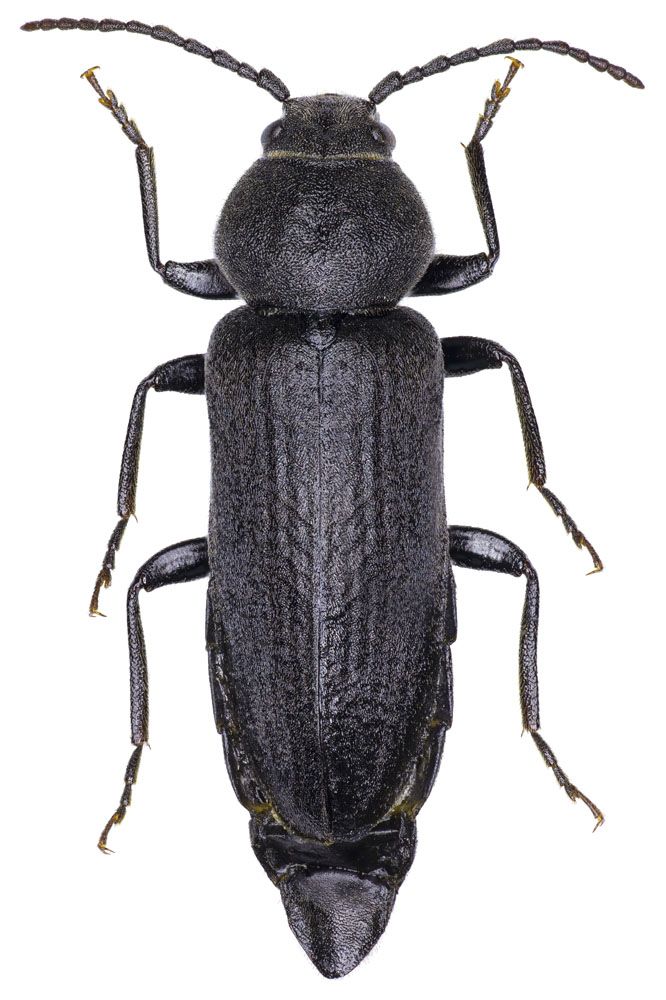
Blackhorned Pine Borer – Callidium antennatum
Black horned Pine Borer (Callidium antennatum)
Latin Name: Callidium antennatum
Common Name: Black horned Pine Borer
Appearance:
- The adult insect is a bluish-black beetle around 15 mm in length and has antennae the same length as the body.
- The wing coverings are more leathery than other beetles, and the body shape is flatter. Larvae are off-white, elongate legless grubs with brown heads that resemble most roundheaded wood borers.
- Larval damage creates sculptured tunneling beneath the bark that mimics router tracks.
- Tunnels made by the blackhorned pine borer and other Callidium species are frequently filled with characteristic, granular frass.
